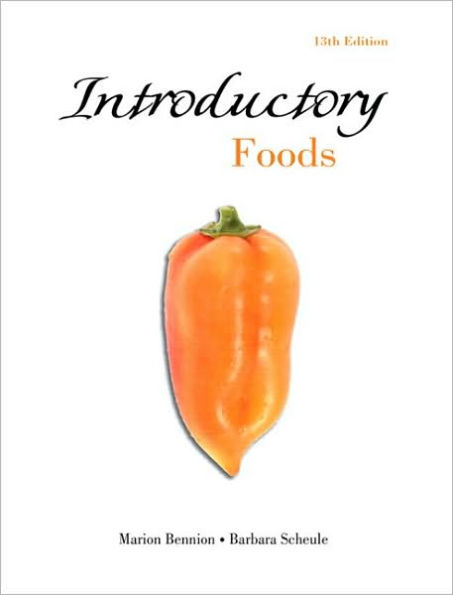Read an Excerpt
Advances in food preparation and processing, along with shifting demographics and expanding knowledge of nutritional needs, mandate a text that is periodically updated and revised to reflect the most recent changes in technology. This 12th edition of Introductory Foods has been written and revised to give beginning college students an understanding of the basic fundamental principles of food preparation and to alert them to many innovations in science and technology related to foods. It is designed to be used in a first course in food preparation.
The organization of chapters in the book has changed from the 11th edition. The first four chapters contain introductory material about food choices, sensory analysis, economics, food safety, and regulations. The next five chapters provide a foundation in the principles of cooking. These first nine chapters contain basic principles that the student may refer to throughout the entire course. The brief discussion of carbohydrates, fats, and proteins in Chapter 9 may be used as a review for students who have had chemistry courses or as an introduction for those who have not studied chemistry. The remaining chapters are divided into eight sections: Fats, Frying, and Emulsions; Sweeteners, Crystalization, Starch, and Cereal Grains; Bakery Products; Vegetables, Fruits, and Salads; Dairy Products and Eggs; Meat, Poultry and Seafood; Beverages; and Food Preservation. The chapters in this book are independent, in that you may choose to present them in any order that best fits the structure of your own course. Cross-references to other chapters are indicated periodically in the written text.
This edition has beensubstantially updated to cover many recent developments in food safety and regulation, food consumption data, biotechnology, technological innovations in food processing and the discussion of new food products. Over 400 new references have been added throughout the text to provide students with current information in food technology, consumer trends, and scientific findings. Feature boxes are added for the first time throughout this 12th edition under three themes: Multicultural Cuisine, Hot Topics, and Healthy Eating. In these features, topics such as ethnic foods in America, nutraceuticals, genetic engineering, organic foods, ethnic flavors, plant sterol esters, probiotics, whole-grain foods, acrylamide, bison, mycoproteins, and fruits are discussed with an emphasis on timely food-related issues and trends. Also new to this edition are chapter summaries and key term lists. We believe students will find these supplements useful in their review of the chapters.
More than 150 new illustrations have been added to depict recipes and foods popular in today's society while maintaining those photographs that demonstrate specific food preparation techniques. The number of color pages have doubled and allowed the addition of several new color photographs.





